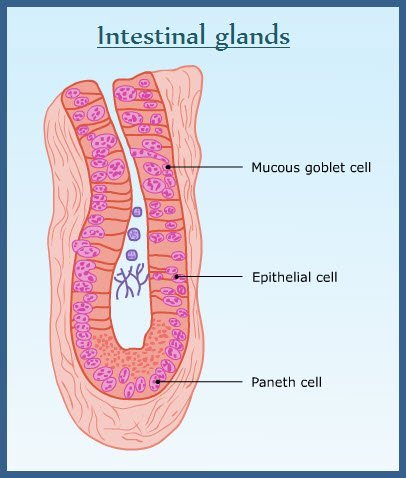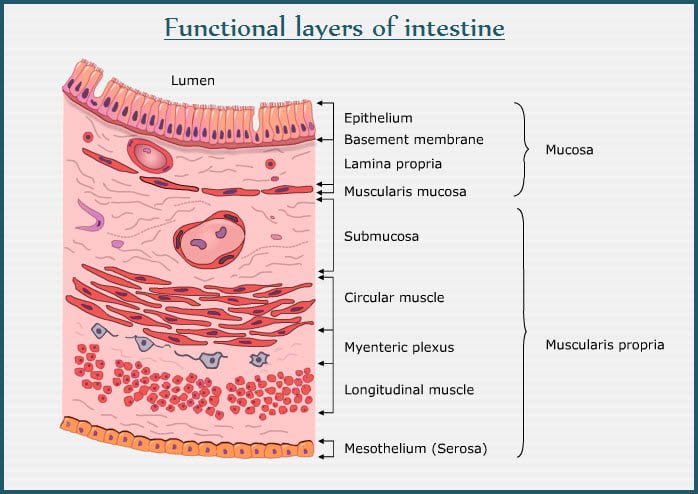TABLE OF CONTENTS
Digestion in small intestinal juice
Small intestine is the predominant site of digestion and absorption. This begins at the end of pyloric sphincter and goes up to large intestine. This is highly coiled structure, has few glands to assist digestion. It is composed of 4 layers-serosal (outer), muscular, submucosa and innermost mucosal layer. Mucosa is the functional layer involved in digestion and absorption.

Small intestine has three major portions namely duodenum, jejunum and ileum, with specific functions.
Digestive Enzymes in the intestinal juice
- Enterokinase: activates trypsinogen to trypsin.
- Dipeptidase: converts proteases to peptones and amino acids.
- Aminopeptidases: converts peptones to amino acids.
- Maltases: converts maltose to glucose
- Lactases: converts lactase to glucose and galactose
- Sucrase: coverts sucrose to glucose and fructose
- Nuclease: converts nucleic acids to mononucleotides.
- Nucleotidase and nucleosidases: convert nucleic acids to purines, pyrimidine bases, phosphoric acid and pentose sugars.
- Lipases: act on fat liberating fatty acids and glycerol.
- Amylases: act on starch resulting in dextrin and maltose.

Optimum pH in various compartments of the GI tract
- Stomach contents: 4.60
- Duodenum : 7.30
- Jejunum : 7.47
- Ileum: 7.55
- Caecum: 7.09
- Colon: 7.09
- Rectum: 6.24